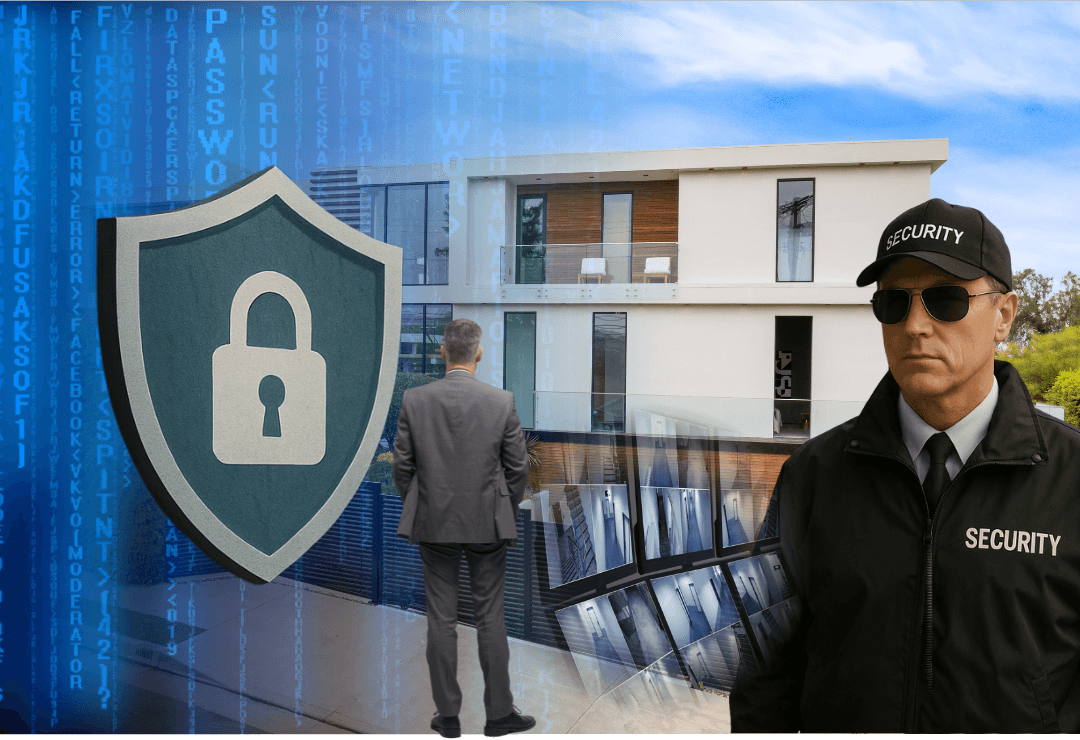Blending Brick and Byte
On July 28, she entered 345 Park Avenue, Blackstone’s global headquarters, passing through the building’s standard security protocols: keycard checkpoints, visitor screening, CCTV coverage, and even an off-duty police officer stationed in the lobby.
None of it stopped a shooter—Shane Tamura—from walking in with an assault rifle and opening fire.
The news sent a chill through the private wealth world.
Family-office principals and security advisors alike asked the same question: Could it happen here, to us?
In the days that followed, search trends like “cyber-physical security for family offices” and “executive protection cybersecurity integration” spiked, as CEOs and chiefs of staff scrambled to identify weak links between physical entry points and digital access.
Decypher specializes in the cybersecurity side of that equation—securing your networks, endpoints, and data flows. We also maintain a vetted network of physical-security specialists whom we can recommend to ensure both layers work together seamless
Why Convergence Matters Now
Threats no longer respect the line between digital and physical. An attacker who slips through a lobby camera can leverage stolen credentials to breach your network. Meanwhile, a compromised workstation can disable badge readers or surveillance feeds.
According to the Financial Times, S&P 500 companies nearly doubled their median CEO security spending in the last year—from $15,671 to $28,382—as they invest in both bodyguards and firewalls. Family offices face the same pressure: you must protect people, property, and sensitive data all at once.
Decypher helps you harden your cyber defenses, so they integrate smoothly with any physical-security program you choose.
What Principals Are Asking Now
In the wake of the Blackstone shooting, family-office leaders are asking deeper questions about the link between physical and digital vulnerability. Many of the calls coming into private security and cybersecurity firms are focused on something bigger than guard staffing—clients want a clear, unified picture of their entire risk surface.
Here’s what’s rising to the top of the list:




These concerns are coming up in boardrooms, family meetings, and vendor vetting, and they’re already shifting how security strategies are built in 2025.
Short and Sweet Headlines are Best!
Unified Threat Assessment
Technology Integration
Next, you stitch your systems together:
- Correlate badge-reader logs with VPN access records so any tail-gating event raises an IT alert.
- Feed AI-driven camera analytics—such as weapon-detection triggers—into your security-operations center dashboard.
- Link panic-button activations in your private jet to a secure-comm channel monitored by your SOC.
Decypher manages the cyber-side integration, ensuring logs and alerts flow accurately into your monitoring tools.
Partner Coordination
Five Steps to Cyber-Physical Resilience

1. Conduct a unified threat assessment
• Combine cyber-vulnerability scans with physical-security surveys.

2. Harden entry and network controls together
• Update badge systems and enforce multi-factor credentials in one coordinated project.

3. Aggregate sensor and log data
• Stream door-access events, camera alerts, and firewall logs into Decypher’s 24/7 SOC.

4. Run combined drills
• Practice a “cyber breach + active shooter” scenario to test coordination. .

5. Review quarterly
• Update policies and playbooks based on new threats and partner feedback.
Conclusion & Next Steps
Protecting your family office today means bridging brick and byte. Decypher secures your networks and endpoints; you engage a physical-security expert of your choice. Together, you create an end-to-end security posture that leaves no gaps.
Ready to coordinate your defenses? Schedule a complimentary Threat Consultation: Contact Decypher.
Stay safe. Stay connected. Stay ahead.
Resources & Further Reading
- White paper: “Comprehensive Cybersecurity for Family Offices”
- Blog: “Smart Devices, Real Exposure: What Every Family Office Should Know About Estate Infrastructure”
- Blog: “Protecting More Than Assets: Personal Cybersecurity for Principals and Their Families”
- Financial Review article: “Rising Blackstone star killed as companies tighten security”
- Financial Times article: “US companies move to tighten security after fatal shooting in New York”

